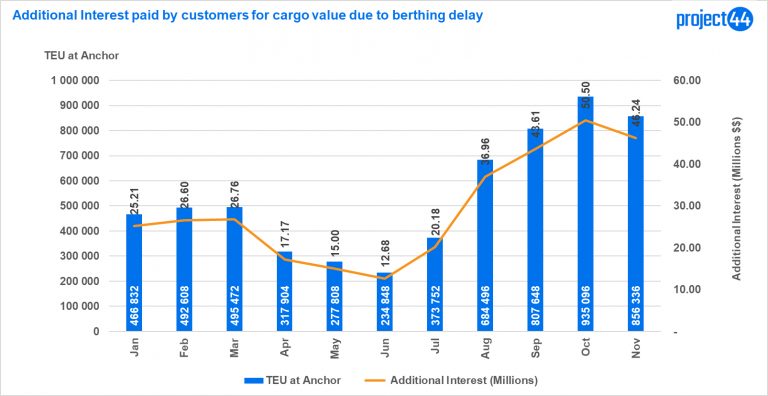US importers are not so worried about cargo waiting offshore to be unloaded. As long as they have enough for their sales or manufacturing, the cargo can sit on a container ship and the principal cost to the shipper is the interest cost. With interest rates at historic lows, that isn’t much.
The graph below from project44, a Chicago, I- based visibility platform, shows the number of TEUs at anchor by month from January through November 2020, on the left. The rise starting in August is significant. Using data from HSBC, which show a 3.2% annual interest rate, using an average container value of $40,000, they calculate almost $50M per month in new delay costs, and cumulative inventory interest costs over $850 million.

The point is that these costs are a lot lower than inventory costs at warehouses. While the cargo is held at sea under riskier conditions, in the warehouse other costs kick in, not the least of which is space required. Insurance charges on the financed inventory also accumulate. And there’s the work, both labor and mechanical, of shuffling the inventory around; it’s very variable given the specific warehouse layout, but can be significant also.
So shippers are using the offshore jam-up rather than wishing it away. Only when the demand for products ratchets up so that the offshore inventory is needed will the stakes change. While we have significant COVID likelihood today, that isn’t likely to change much.
It’s always interesting to look at the overall question of inventory cost in the supply chain. Advantages to shippers can come from unlikely places.

By Nick Savvides 12/01/2022
US importers using box ships to store cargo – cheaper than warehouses – The Loadstar

Pingback: US importers using box ships to store cargo